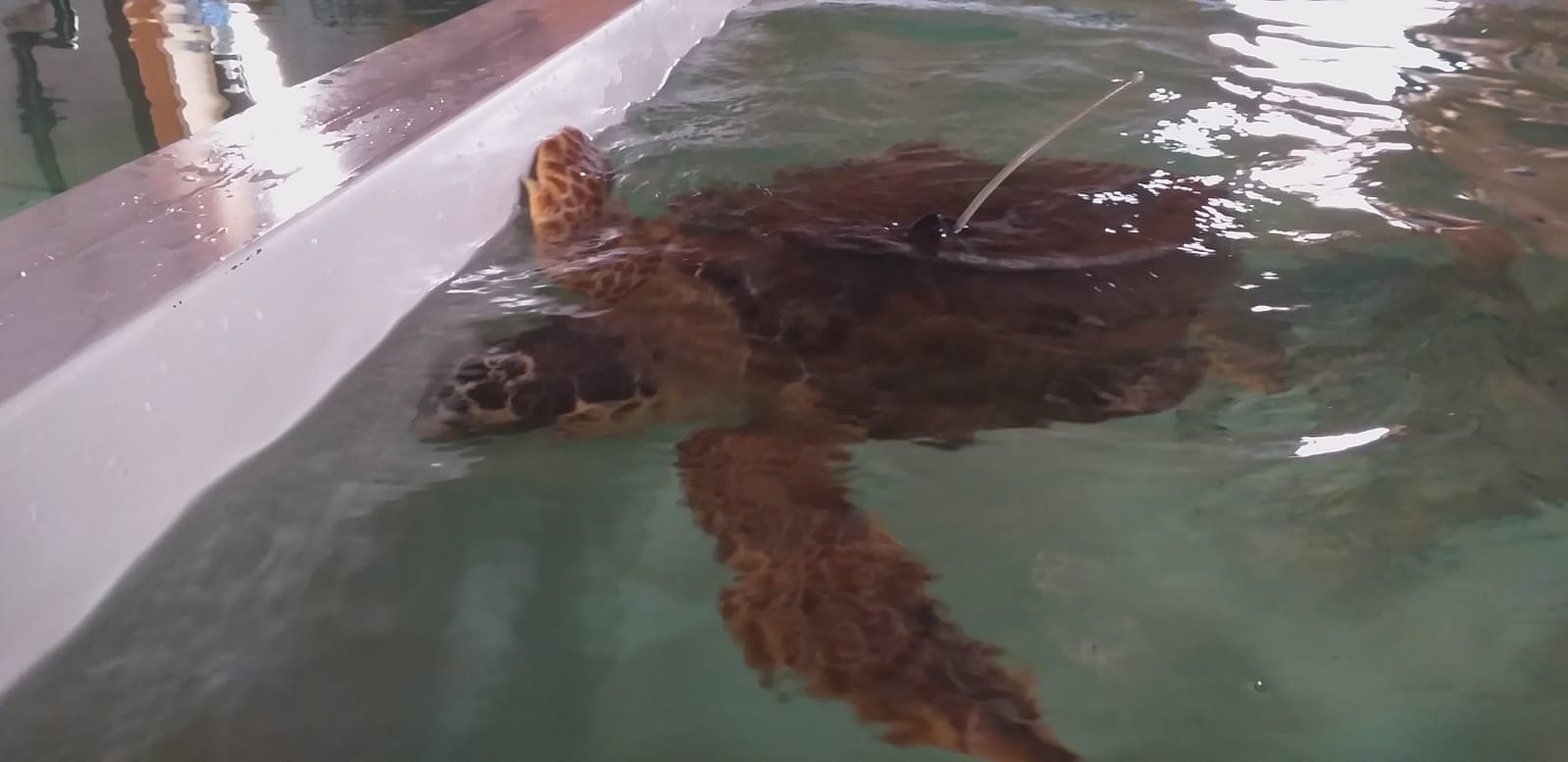
A project with the Torre Guaceto Marine Protected Area to create a “Puglia Marine Observatory” for the protection of Caretta caretta turtles. Cutting-edge sensors, operational forecasts for the Mediterranean Sea, and a dedicated web app able to track the routes of sea turtles and collect key information to monitor climate change impacts on sea turtle habitats and behaviours, in order to design and plan strategies to protect them.
Loggerheads (Caretta caretta marine turtles), are the most common turtle in the Mediterranean, nesting on beaches from Italy, Greece and Turkey to Israel and Libya, but is considered a vulnerable species: the increasing impacts of fishing and in particular the impact and mortality of fisheries bycatch, that is the accidental capture of marine animals in fishing gear, loss of habitats, microplastics pollution in oceans and other human unsustainable activities, are potential deadly threats for sea turtles. In addition, many of their nesting beaches are under threat from tourism development. To foster the protection of biodiversity it’s therefore essential decrease these impacts while informing and raising awareness among local communities and fishermen. Moreover, it is of crucial importance to improve our knowledge with the identification of sub-areas most frequented by marine turtles, the identification, monitoring and protection of their nesting areas, the understanding of the extent and dynamics of the seasonal movements of sea turtles.
The CMCC Foundation – Euro-Mediterranean Center on Climate Change is partner of MYSEA, a project coordinated and funded by Consorzio di Gestione Torre Guaceto that aims at creating of a “Puglia Marine Observatory” for the protection of Caretta caretta turtles. In the frame of the project, some of the Caretta caretta turtles rescued at the Torre Guaceto Sea Turtle Recovery Center will be released equipped with satellite sensors able to track the routes of sea turtles and collect key environmental data that will be essential to monitor climate change impacts on their habitats and movements, in order to design and plan strategies to protect them.
More in detail, the researchers of the CMCC scientific Division Ocean Predictions and Applications (OPA) will deal with providing the operational forecasts for the Mediterranean Sea in order to understand and identify the environmental parameters that influence the movements of sea turtles; the CMCC will be also responsible for the collection and analysis of the data sent by sensors on tortoise shells. Moreover, the CMCC is responsible for the design, development and management of the portal mysea.it
Figure 1: the loggerhead turtle equipped with sensors and ready to be released to the wild
“Our web app mysea.it”, explains Rita Lecci, oceanographer at the CMCC Foundation and Service Manager of the CMEMS Mediterranean and Black Sea Monitoring and Forecasting Centers, “allow us to follow the set free loggerhead turtles over time, and to visualize the current position of sea turtles. Rescued sea turtles were released to the wild at different times in order to identify the seasonal movements of loggerhead turtles while trying to assess the key factors influencing their behaviors, such as sea temperature, currents, waves, or food (plankton) availability. The map ‘background’ of the portal mysea.it is represented by the CMCC forecasts for the Mediterranean Sea developed for CMEMS, and in particular the hourly ocean forecasts for temperature, salinity, sea level, currents and mixed-layer, for the next five days”.
Figure 2: the route of the turtle 202782 on the portal mysea.it; the turtle was rescued and released to the wild on January 11, 2021
Starting from August 2020, five sea turtles were already released to the wild, the last turtle being set free on January 2021 from the Torre Chianca beach, near the municipality of Lecce (the sea turtle identified on the portal mysea.it by ID 202782 and the blue route, ed).
“One of the major objective of the project”, concludes Rita Lecci, “is to understand why loggerhead turtles are following different routes after their release to the wild: a turtle for example remained near the Apulian coasts, another turtle arrived in Greece and another turtle stayed for many months near Croatian islands, in an area well-known by experts for being a foraging and breeding area regularly frequented by sea turtles. Improving our knowledge, we will be able to understand the main factors influencing their behaviors. In the following months, the environmental data collected by the sensors will be analyzed in detail with the aim to identify useful information to improve and strengthen the protection of these animals.”
For further information, visit the webpage of the project Mysea
Follow loggerheads on the portal mysea.it
Photo credits: Laura Caciagli, Rita Lecci




